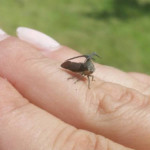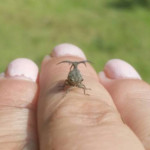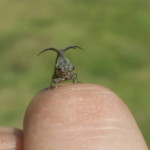Common Pierrot (Castalius rosimon)
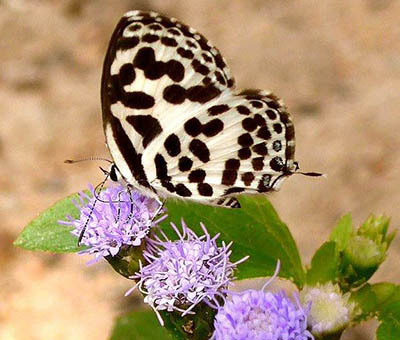
Image Copyright Michael Erik Maria Finder
Last Observed: April 2016 – Koh Chang
Last Observed By: Michael Erik Maria Finder
The Common Pierrot is presumably named after the creepy and rather unpleasant Italian clowns of the same name. It’s black and white you see.
It actually has a really attractive pattern though with all kinds of leopard-like spots on a white background.
It is a South Asian native butterfly that is a member of the lycaenid family of butterflies.
Common Pierrot Wikipedia
[fullwidth background_color=”” background_image=”” background_parallax=”none” enable_mobile=”no” parallax_speed=”0.3″ background_repeat=”no-repeat” background_position=”left top” video_url=”” video_aspect_ratio=”16:9″ video_webm=”” video_mp4=”” video_ogv=”” video_preview_image=”” overlay_color=”” overlay_opacity=”0.5″ video_mute=”yes” video_loop=”yes” fade=”no” border_size=”0px” border_color=”” border_style=”” padding_top=”20″ padding_bottom=”20″ padding_left=”” padding_right=”” hundred_percent=”no” equal_height_columns=”no” hide_on_mobile=”no” menu_anchor=”” class=”” id=””][fusion_text]
The Tailed Judy (Abisara neophron)
[/fusion_text][/fullwidth][fullwidth background_color=”” background_image=”” background_parallax=”none” enable_mobile=”no” parallax_speed=”0.3″ background_repeat=”no-repeat” background_position=”left top” video_url=”” video_aspect_ratio=”16:9″ video_webm=”” video_mp4=”” video_ogv=”” video_preview_image=”” overlay_color=”” overlay_opacity=”0.5″ video_mute=”yes” video_loop=”yes” fade=”no” border_size=”0px” border_color=”” border_style=”” padding_top=”20″ padding_bottom=”20″ padding_left=”” padding_right=”” hundred_percent=”no” equal_height_columns=”no” hide_on_mobile=”no” menu_anchor=”” class=”” id=””][fusion_text]Last Observed: February 2015, Koh Chang
Observed By: Hans Henrik Hansen
The Tailed Judy is a small butterfly that is a member of the Punches and Judies (great naming again) family of butterflies.
The male and female have similar patterns but the male is slightly paler. They are mainly brown in colour with some nice white go-faster stripes and some of those sneaky eye-like patterns on their wings – presumably to deceive predators.
Tailed Judy Wikipedia[/fusion_text][imageframe lightbox=”no” lightbox_image=”” style_type=”dropshadow” hover_type=”none” bordercolor=”” bordersize=”0px” borderradius=”0″ stylecolor=”” align=”center” link=”” linktarget=”_self” animation_type=”0″ animation_direction=”down” animation_speed=”0.1″ animation_offset=”” hide_on_mobile=”no” class=”” id=””] 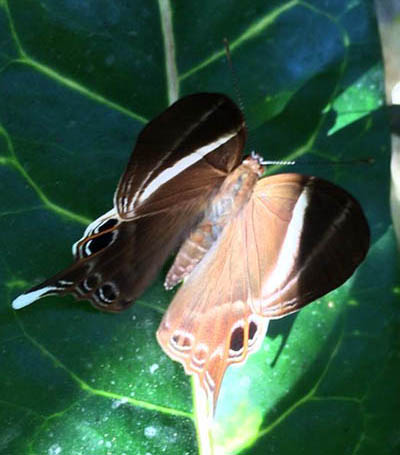 [/imageframe][/fullwidth]
[/imageframe][/fullwidth]
[separator style_type=”single” top_margin=”” bottom_margin=”” sep_color=”” border_size=”” icon=”” icon_circle=”” icon_circle_color=”” width=”” alignment=”center” class=”” id=””]
Transverse Ladybird (Coccinella transversalis)
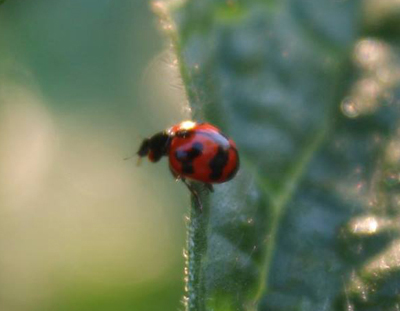
Image Copyright Perry Stevens
Last Observed: March 2016, Koh Chang
Observed By: Perry Stevens
This common species of ladybird is found from India across to Australasia.
From a human perspective this little beetle is one of the good guys since it preys on many plant eating insects such as aphids and leafhoppers that cause damage to commercial crops.
It has a black head and a red/orange body with sort of Rorschach blotches where (if you’re European) you’d expect to see spots.
Transverse Ladybird Wikipedia
Nettle Caterpillar (Parasa lepida)
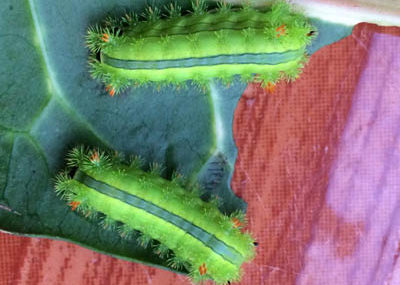 Last Observed: March 2016 – Koh Chang
Last Observed: March 2016 – Koh Chang
Last Observed By: Hans Henrik Hansen
The nettle caterpillar is a bright green caterpillar with a dark green stripe that eventually devlops into a brown and green moth.
It’s larvae are considered to be pests and pose a threat to various crops such as coffee, coconut, cocoa, tea nad mango.
Nettle Caterpillar Wikipedia
Umbelligerus peruviensis
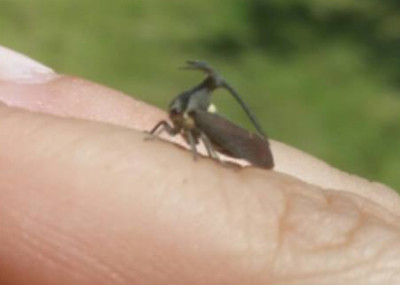
Image Copyright Rinske Hackman
Last Observed: February 2016, Koh Chang
Observed By: Rinske Hackman
The unique three pronged “antlers” that sprout from the head of this bizarre insect are almost like a helicopter’s rotor blades. They don’t turn of course. This fly gets around using its wings and the internet is unusually circumspect regarding what on earth the blades are for.
So I’m going to guess that they offer protection from predators by camouflage. Or maybe they are used in display to win potential mates? Or perhaps they are used to fight off other Umbelligerus peruviensis? Maybe the fly is wearing them for a bet? If you know please pass on a scientific answer.
Umbelligeris peruviensis National Geographic
Image Copyright Rinske Hackman
Image Copyright Rinske Hackman
Image Copyright Rinske Hackman
Micronia Aculeata
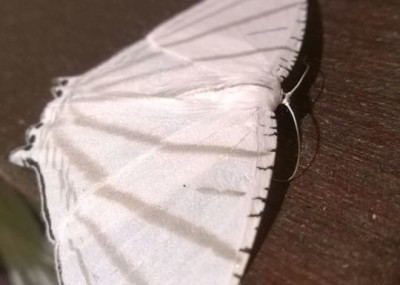
Image Copyright Napha Kotkangplu
Last Observed: February 2016, Koh Chang
Observed By: Napha Kotkangplu
Okay let’s be honest here. This moth might not actually be micronia aculeata, a moth that is apparently found in India and Sri Lanka. Hard to tell though, it certainly looks extremely similar so at worst it’s a very close relative. And the internet has so much different and often contradictory information that identifying animals – particularly insects – extra particularly butterflies and moths is a nightmare. So it’s Micronia aculeata until an expert tells us otherwise. Okay?
Micronia Aculeata Wikipedia
Masked Hunter (Reduvius personatus)
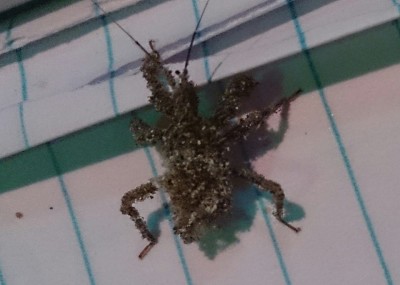
Image Copyright Lena Abi Chaker
Last Observed: February 2016, Koh Chang
Observed By: Lena Abi Chaker
The masked hunter is a small predatory member of the assasin bug family of insects. It’s another of those “you won’t believe it animals” that Koh Chang seems to specialise in. The photograph isn’t blurred, oh no. The sneaky masked hunter camouflages itself by covering its shell with dust, dirt and small particles of matter. Then it pounces on its unsuspecting prey ot woodlice, lacewings and other smaller insects. It also eats bedbugs in case you require a redeeming feature.
They apparently have a very painful bite which they can use in self defense – but fear not there’s no poison – for a change.
Masked Hunter Wikipedia
Jewel Beetle (Chrysocroa fulgens)
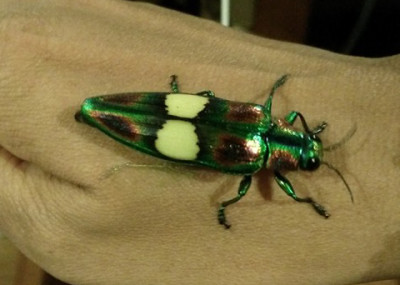
Image Copyright Paweena Khamsap
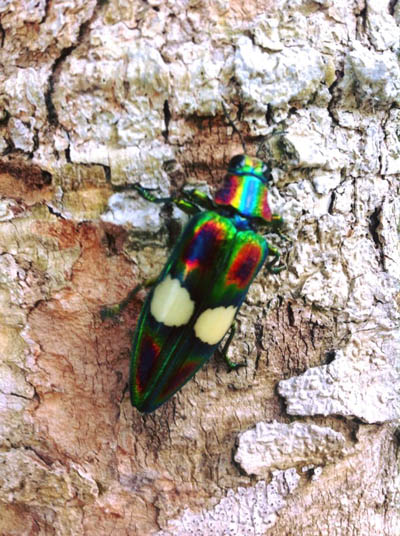
Image Copyright Nattapol Phutong
Last Observed: February 2016, Koh Chang
Observed By: Paweena Khamsap, Nattapol Phutong
The Jewel Beetle family are also known as the metallic wood boring beetles. Both names refer to their incredible iridescent shell which has a brilliantly coloured metallic sheen, and in the case of this species two ivory-coloured spots on the back.
Jewel Beetle Weevil Coleoptera-Atlas.com
Red Palm Weevil (Rhynchophorus ferrugineus)
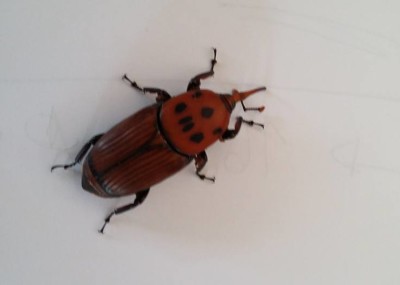
Image Copyright Jean-Pierre Odet
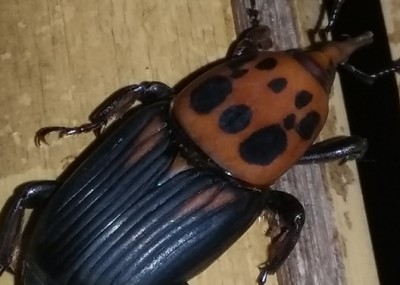
Image Copyright Jean-Pierre Odet
Last Observed: February 2016, Koh Chang
Observed By: Jean-Pierre Odet
The red palm weevil is a long-snouted brown and black beetle that grows up to 5cm in length.
They excavate holes in palm trees that can result in their death and they are considered a major pest in commercial palm plantations.
Red Palm Weevil Wikipedia
Dundubia spiculata
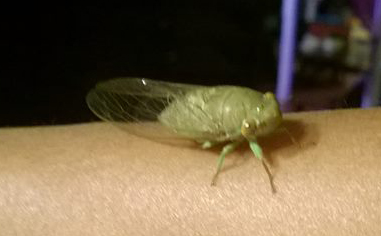
Image Copyright Napha Kotkangplu
Observed: February 2016
Observed By: Napha Kotkangplu
Dundubia spiculata is a species of Cicada found on Koh Chang. If you hear an unholy screeching racket round about sunset it might be this fellow setting up a hullabaloo with his wings.


 [/imageframe][/fullwidth]
[/imageframe][/fullwidth]
 Last Observed: March 2016 – Koh Chang
Last Observed: March 2016 – Koh Chang
